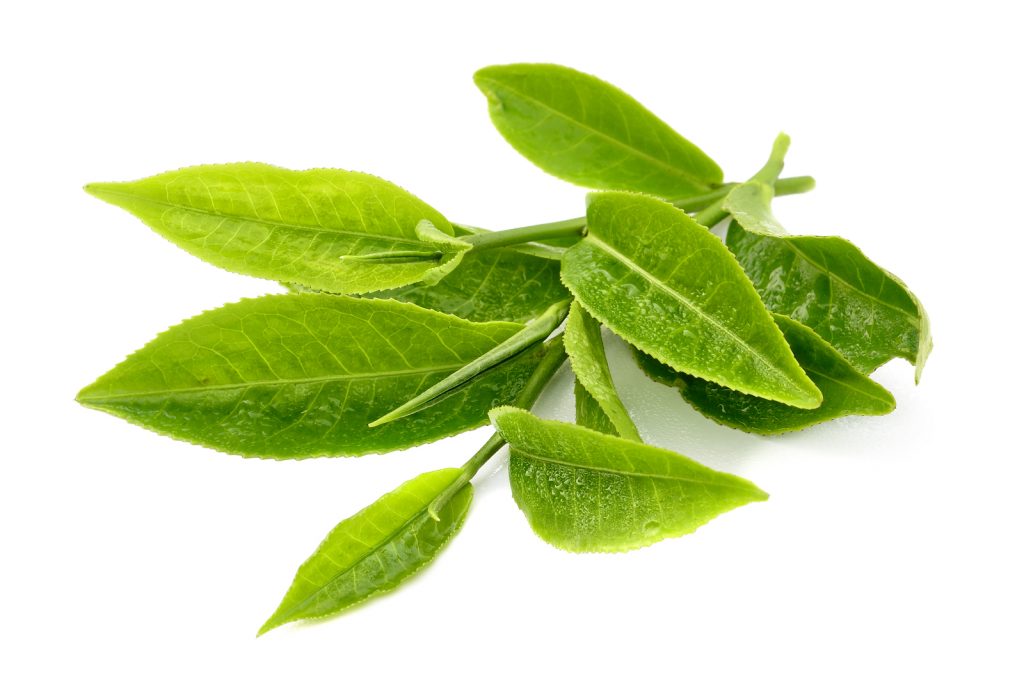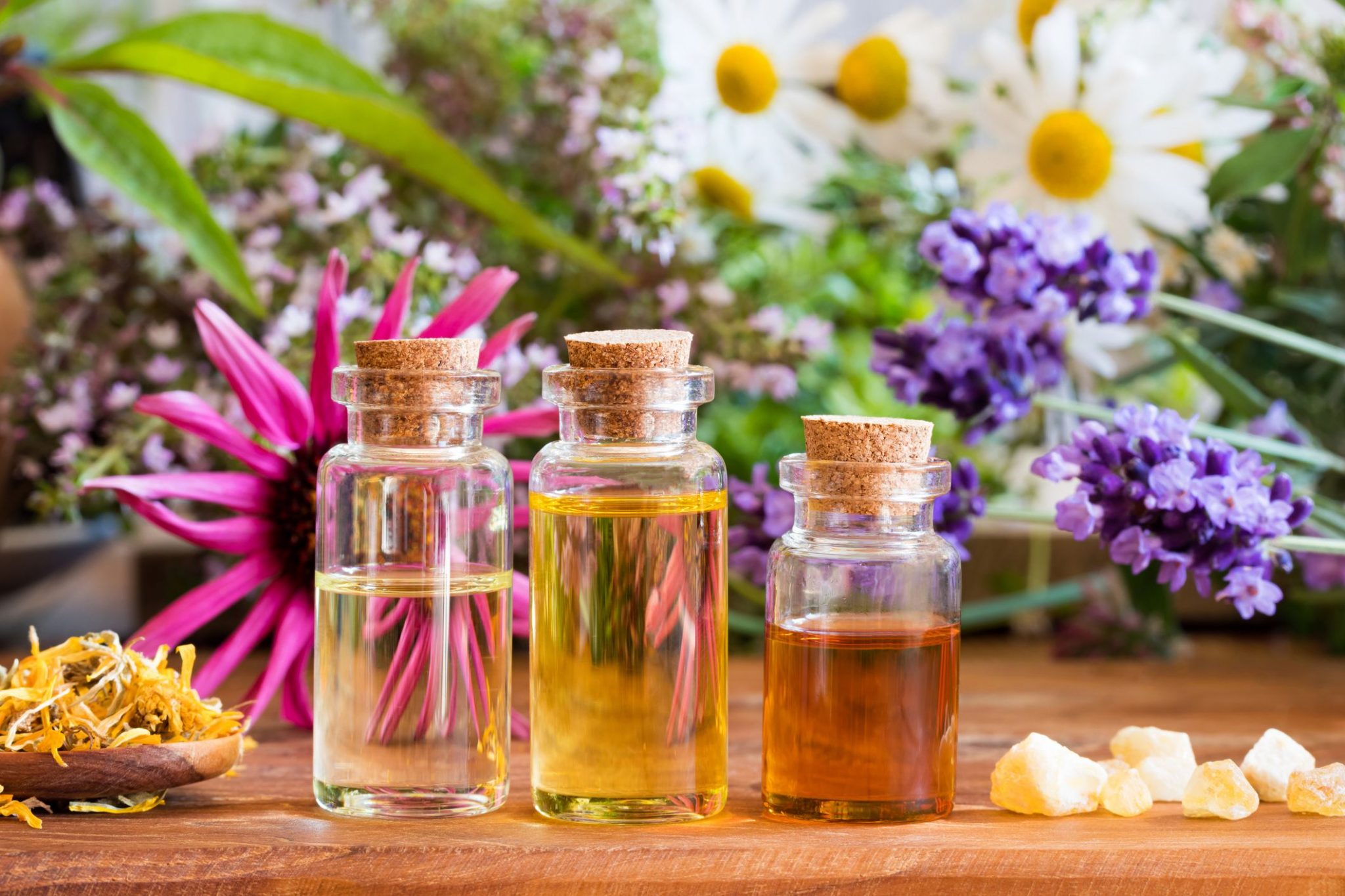
Essential oils for toenail fungus successfully capture the healing properties of chosen plants that have been used for the treatment of different fungal infections for centuries.
Toenail fungus, medically also known as onychomycosis, is a common condition typically caused by a dermatophyte fungus. The fungal infection starts as a white or yellow spot beneath the toenail and spreads deeper underneath the nail as the time passes by. If the infection manages to advance, it causes nail discoloration, thickening, and crumbling of the nail, especially at the edges.
Table of contents
Although mild infections may not require professional medical treatment, it is still important to take self-care preventions to stop the fungal thriving at the right time. Some severe cases of toenail fungus can lead to pain, permanent nail damage, difficulties when walking, and even onycholysis (detachment of the nail from the nail bed).
A person should seek medical help when self-care remedies don’t show any improvements, and if the toenail fungus develops due to diabetes, as approximately one-third of diabetics develop this particular fungal condition.
7 Essential oils for toenail fungus
Tea tree essential oil

Tea tree essential oil is an effective natural fungicide. Its strong essence, consisting of Alpha Pinene, Linalool, Sabinene, Cineole etc., successfully inhibits fungal growth, be due to toenail fungus, dermatitis or Athlete’s foot. Additional antiviral, antimicrobial, and antibacterial qualities elevate the tea tree oil’s potential of healing the infection even further.
Open toenail wounds are exposed to environmental threats, especially when walking barefoot or in dirty socks. These risqué circumstances often worsen the infections. Fortunately, antiseptic attributes of the tea tree oil that are comparable to those of antibiotics will also help you protect your exposed wounds from free radicals and bacteria.
Oregano essential oil

Oregano essential oil as one of many essential oils for toenail fungus carries antifungal properties that come in handy when treating internal as well as external fungal infections. Toe fungus is an external infection that can easily be suppressed at early stages by allowing the antifungal, antibacterial and antiparasitic qualities of the oil stop the microbial thriving.
If your toe infection has already advanced into the stage of pain, redness, and inflammation, the vital anti-inflammatory and antibiotic attributes within the oregano essence will help you soothe the irritated tissue, making pain and discomfort vanish away.
Orange essential oil

Orange essential oil derived from orange peel through the process of cold compression is enriched with two chief components called Limonene, occupying up to 85-96% of extract, and Myrcene taking 0.5-3% of the essence. With its strong citrusy formula, orange essential oil easily kills germs, bacteria, and microbes known for causing internal as well as external infections.
If the body gets affected by the fungal or bacterial infection, the anti-inflammatory attributes quickly provide the relief from pain, irritation, and discomfort while stimulating nature of the orange essence boosts blood circulation, flushing the aching toes with oxygen and nutrients necessary for regeneration.
Clove essential oil

Clove essential oil is a natural antifungal, antimicrobial, antiviral and antiseptic agent that is, according to the study published in the Oral Microbiology & Immunology, as effective as Nystatin: a drug prescribed for treating mouth yeast infections. However, clove essential oil doesn’t cause harmful side effects as Nystatin does.
Such influential nature of clove essential oil can be used for the treatment of toenail fungus on diabetics whose damaged and contacted blood vessels often impair blood circulation necessary for the recuperation. Needless to say, efficient oxygen supply is as important as the water is to the flower.
Cinnamon essential oil

Cinnamon essential oil provides antifungal healing properties capable of curing different fungal infections, including toenail fungus. Cinnamon itself, as a widely popular spice, has pleasant spicy and yet musky aroma that will help you camouflage the foul odor of your infection.
Diabetics are often affected by the onychomycosis because high blood glucose levels tend to damage large blood vessels as well as capillaries.
Damages veins cause poor blood circulation in arms, legs, and feet, which not only increases the risk of developing fungal infection but also diabetic neuropathy (nerve damage)
Luckily, cinnamon oil helps stabilize sugar levels in blood for long-term improvements.
Lavender essential oil

Lavender essential oil consists of active antifungal and antimicrobial components capable of destroying membranes of fungal cells. Regular use of lavender essential oil will not only help you tackle your bacterial or fungal infection but also help you boost your immunity for better resistance towards new flair-ups.
Toes, as one of the most remote parts of the body, are often last on the list when it comes to oxygen and nutrient supply, especially if having peripheral vascular disease or diabetes. Poor blood flow can slow down the healing process, giving the fungi a chance to advance once again. Fortunately, lavender aromatherapy can take care of this problem by simply boosting circulation and oxygenation.
Thyme essential oil

Thyme essential oil is enriched with a powerful natural component called Carvacrol, comprising approximately 58% percent of the thyme essence. According to the study published in the Journal of Essential Oil Research, thyme essential oil and its Carvacrol were more efficient at fighting Candida albicans than cinnamon essential oil was.
Candida albicans is the yeast found in the human body, often responsible for the development of nail infections. Candida infections usually develop due to the poor functioning of the immune system, which fails to fight the yeast overgrowth within the system. Fortunately, thyme essential oil, as a tonic, helps boost human immunity for better resistance to different internal as well as external threats.
3 Natural essential oil recipes for toenail fungus

- Basic toenail fungus treatment
Instructions:
- Clean and disinfect your toenail before starting the treatment.
- Apply undiluted essential oil of your choice with a cotton ball directly on your affected toenail.
- If the undiluted form is irritating your skin, or if you have any cuts and open wound near the toenail, dilute your essential oil with an equal amount of carrier oil (olive, coconut, sunflower, sweet almond oil etc.)
- For better absorption, it is best to clip and file the nails beforehand.
- Apply your chosen essential oil on toenail once a day until you see the results.
- The duration of daily treatment varies depending on the chosen essential oil. If you are using tea tree essential oil, let the essence sit on your nail for about 10 minutes before scrubbing it off, and if you are using lavender essential oil apply it before going to bed and allow it to soak in overnight.
- Antifungal clove treatment
Ingredients:
- 2 tsp of coconut or olive oil
- 4-8 drops of clove essential oil
Instructions:
- Blend all ingredients in exact measurements together.
- Apply the blend over your affected toenails 2-3 times per a day.
- Cinnamon foot soak
Ingredients:
- 1-2 tsp of cinnamon essential oil
- Basin filled with hot water
Instructions:
- Fill your basin with hot water and add 1-2 tsp of cinnamon essential oil to it.
- Disperse the oil thoroughly.
- At this point, you may also add sea salt to the water if desired.
- Soak your feet in water once a day for 20 minutes.
- Pat your feet dry after your 20-minute treatment is complete.
Conclusion
Fungi as unicellular or multicellular organisms can be naturally resistant to antifungal medications or develop resistance towards them over time. Because of these circumstances, fungal infections have become an emerging public health concern. Statistics shows that approximately 12% of people living in the United Sates are affected by toenail fungal infections.
Countless modern studies of the 21st century have proven the impressive antifungal, antibacterial, and antiviral potential of the listed essential oils for toenail fungus. Their natural chemicals successfully inhibit fungal thriving without putting the body at any additional risk.
Here are the last tips that will help you exploit the healing benefits of essential oils for foot fungus in safe and effective manner:
- Keep your socks and shoes dry because fungi thrive in warm and damp environments.
- Wear breathable footwear and cotton socks.
- Avoid wearing the same shoes every day.
- Never share shoes, socks or towels with other people.
- Regularly disinfect your shoes with antibacterial spray and antifungal powder.
- Clean and disinfect your shower with bleach-based cleaner regularly.
- Avoid being barefoot in public places, especially in locker rooms.
- Disinfect your nail clippers and nail file after every use; you don’t want to spread the infection on other healthy toes.
- Boost your immune system with healthy and nutritious foods, such as coconut oil, garlic, onions, rutabaga, ginger, lemon juice, lime juice, love oil, pumpkin seeds, and cayenne pepper. These foods will help you fight Candida overgrowth.
- Before introducing a new essential oil to your therapy do a skin test patch to make sure you are not allergic to the natural remedy.
- If you have been diagnosed with a skin condition or have other illness that may get compromised by the essential oil, make sure to consult your medical specialist beforehand.
- Don’t apply essential oils for toenail fungus to open wound or cuts on your skin.
- If you are pregnant or breastfeeding, consult your medical specialist about the possible side effects.
Sources and References
- CDC Fungal Nail Infections
- PubMedHealth Onychomycosis (Toenail Fungus)
- HealthDirect Toenail infection








